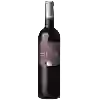
Winery Les Vignerons du CastellasCoteaux d'Aix-en-Provence Blanc
This wine generally goes well with
Details and technical informations about Winery Les Vignerons du Castellas's Coteaux d'Aix-en-Provence Blanc.
Discover the grape variety: Glacière
Unknown, it is still found only in Vaucluse in most cases established in arbors (our photographs), never in culture. La Glacière is a table grape, not always pleasant to eat, that was once kept either on stumps or on racks for the winter. Today, it is very rare to find this variety, which has completely disappeared.
Informations about the Winery Les Vignerons du Castellas
The Winery Les Vignerons du Castellas is one of of the world's great estates. It offers 28 wines for sale in the of Coteaux d'Aix-en-Provence to come and discover on site or to buy online.
The wine region of Coteaux d'Aix-en-Provence
Côteaux d'Aix-en-Provence is one of the main French appellations in the Provence wine region, located in the extreme southeast of the country. It is the second largest appellation in the region, with about 4,000 hectares North and west of Aix-en-Provence - the town from which it takes its name. The area also bears the tiny title of AOCPalette. The Côteaux d'Aix-en-Provence appellation was first introduced as a VDQS in 1956, having been informally known as Côteaux du Roy René (René d'Anjou being a 15th century French king famous for his love of wine and the Vine).
The wine region of Provence
Provence is a wine region in the far southeast of France, best known for the quality (and quantity) of its rosé wines and for its Warm, mild Climate. The modernization that is taking place in many of the traditional wine regions of southern France has not yet taken place to the same extent in Provence, but there are Clear signs of change. The region's Grape varieties, in particular, have come under scrutiny in recent decades. Traditional varieties such as Carignan, Barbaroux (Barbarossa from Sardinia) and Calitor are being replaced by more commercially viable varieties such as Grenache, Syrah and even Cabernet Sauvignon.
The word of the wine: Density per hectare
Number of vines per hectare. For the same yield, a vine planted with 3,000 vines per hectare bears many more bunches (per vine) than a vine planted with 10,000. The grapes will therefore be less rich in sugar and polyphenols (tannins, aromas...).














